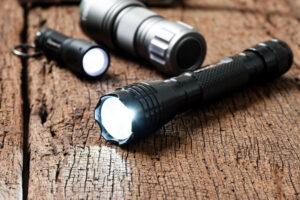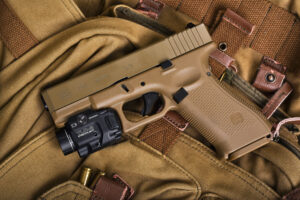By: Brian Boling
USDSA National Trainer
I just returned from this year’s Shot Show and the amount of equipment and technology now available for law enforcement is overwhelming. Each year, there seems to be a different focus. This year featured light systems and manufacturers.


When I started in law enforcement, if you had the money, you were able to get a 3-cell Maglite. Otherwise, you still had the yellow plastic Ray-o-vac flashlight that included your first two batteries. Neither of these were known for their brightness. Later, lights advanced to rechargeable systems that provided more lumens, but their duration was an issue. I will never forget the feeling when I was using a rechargeable light for a search outdoors. Then, without adequate warning, the light lost its charge. One second it was bright, and the next, it faded off into nothing. The solution was to begin carrying two because two is one, one is none. For me, there was never a better example of the need for a back-up. As light duration increased, the overall size of lights began to decrease. This improvement encouraged more LEOs to carry a light on them.
Now, there’s really no excuse to not have a couple of quality lights. There are a multitude of options that include various sizes, brightness, styles, and applications for light implementation. Whatever you choose, your light system is part of your equipment. Training with the light system that you choose is important. There are proper and improper ways to utilize this tool.
The topic of lights comes up in our training. The simple rule is–if you need light, use it. If you don’t, then keep it off. Unnecessary light can lead to giving your position away, illuminating or backlighting a fellow team member, and/or costing you and your team loss of night vision.
Any way you look at it, you must prepare yourself with enough quality equipment to keep yourself and team safe. You must train with every tool so you can become familiar with each of their individual features and how they work in conjunction with the other tools you may be using at the time. Different environments should be considered as well.
Handheld, weapon-mounted, and gear-mounted lights all have a place. It’s up to you and your team to identify the best practices for them and training with them is the best way to do just that.
Stay safe!
